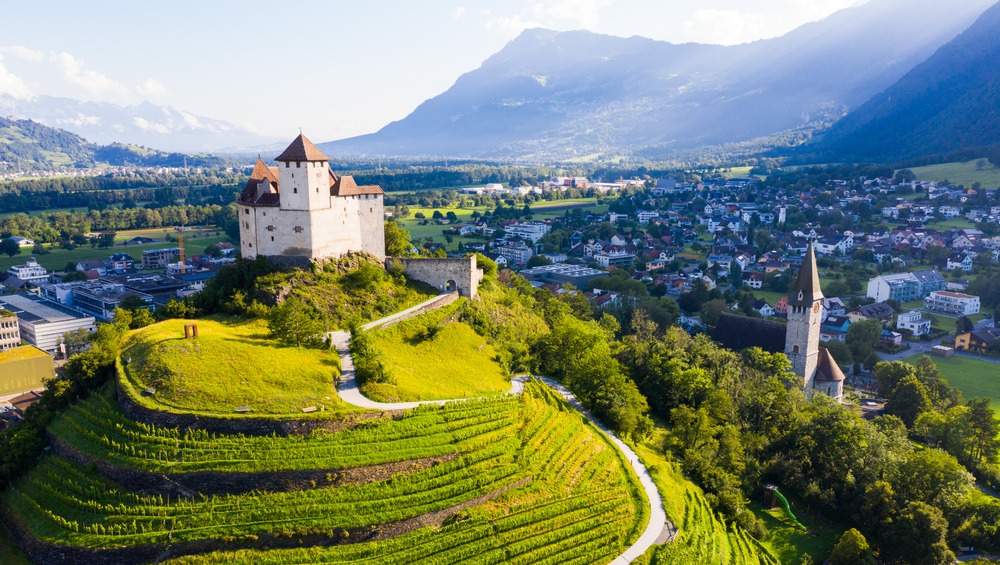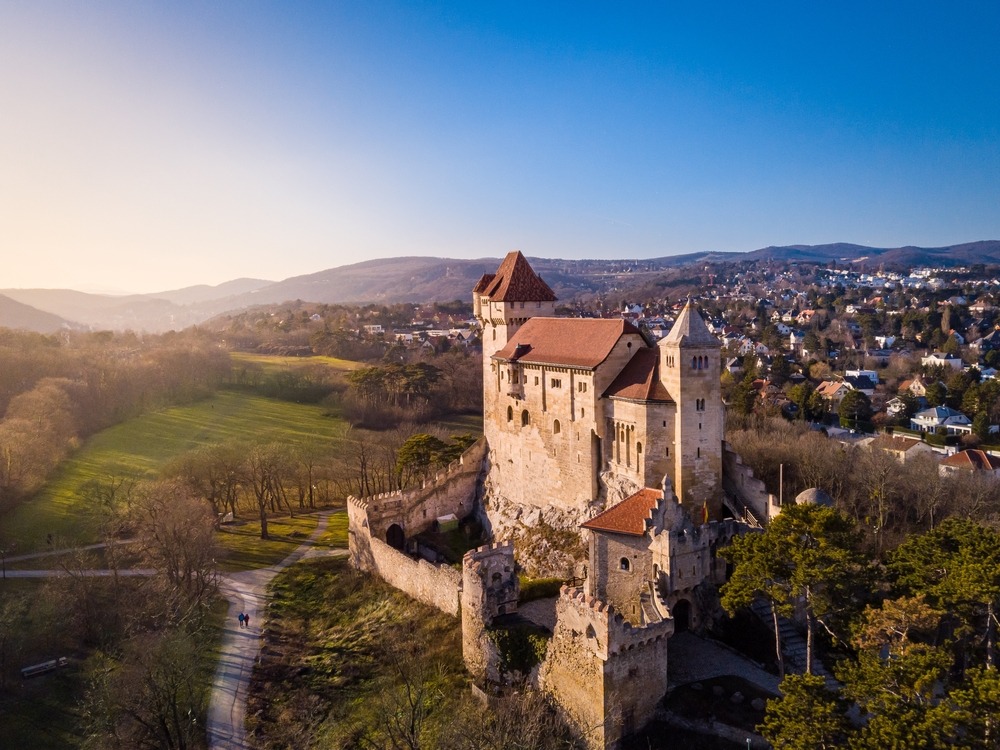The History and Top 25 Attractions of Liechtenstein
History of Liechtenstein
Nestled between Switzerland and Austria, Liechtenstein is one of Europe’s smallest yet most intriguing nations. Despite its modest size—just over 62 square miles—Liechtenstein boasts a remarkably rich and distinct history, shaped by centuries of political maneuvering, dynastic ambition, and economic resilience.
The region that comprises modern-day Liechtenstein was originally part of the Roman province of Raetia. During the early Middle Ages, it became incorporated into the Frankish Empire and later the Holy Roman Empire. For centuries, the territory was a patchwork of feudal holdings, gradually consolidated under various noble families.

The pivotal moment in Liechtenstein’s history came in 1699 and 1712, when the Liechtenstein family—a wealthy noble dynasty with vast land holdings across Central Europe but no seat in the Imperial Diet—purchased the lordships of Schellenberg and the county of Vaduz. On January 23, 1719, Holy Roman Emperor Charles VI officially declared the two territories a principality under the name Liechtenstein, elevating the family’s status within the Empire. This date is still celebrated as the birth of the nation.
Following the dissolution of the Holy Roman Empire in 1806, Liechtenstein became a member of Napoleon’s Confederation of the Rhine and, after Napoleon’s fall, the German Confederation. Interestingly, Liechtenstein remained neutral during both World Wars and avoided the conflicts that engulfed its neighbors. During World War II, it became a haven for certain refugees and artists, maintaining strict neutrality while subtly aligning its interests with Swiss policies.
In the post-war era, Liechtenstein underwent a remarkable transformation. Once a largely agrarian country, it embraced industrialization and financial services, becoming one of the wealthiest nations per capita in the world. It formed a customs and monetary union with Switzerland and uses the Swiss franc as its currency. Politically, Liechtenstein is a constitutional monarchy with one of the few reigning princes in Europe still wielding significant political power.
Today, Liechtenstein is renowned not only for its stable governance and economic prosperity but also for its picturesque Alpine landscapes, well-preserved medieval architecture, and vibrant cultural institutions.

Top 25 Attractions in Liechtenstein
-
Vaduz Castle – The official residence of the princely family, this medieval hilltop castle is an iconic symbol of the country, offering panoramic views over the capital, Vaduz.
-
Kunstmuseum Liechtenstein – This modern art museum features an impressive collection of 20th and 21st-century art, housed in a striking black cube structure.
-
Liechtenstein National Museum – Explore the country’s cultural heritage, from prehistoric artifacts to royal regalia and folk traditions, all under one roof in Vaduz.
-
Gutenberg Castle – Located in the town of Balzers, this restored hilltop castle is open to the public and often hosts cultural events and exhibitions.
-
Vaduz Cathedral (St. Florin) – A neo-Gothic Catholic cathedral built in 1874, known for its elegant architecture and spiritual significance.
-
Prince of Liechtenstein Winery – Set amidst the royal vineyards, this winery in Vaduz allows visitors to sample fine local wines and explore the baroque cellars.
-
Malbun Ski Resort – The country’s premier ski destination, ideal for both winter sports enthusiasts and summer hikers exploring the Rätikon range.
-
Liechtenstein Center – A tourist information hub in the heart of Vaduz where visitors can get their passports stamped and learn about the principality.
-
Red House (Das Rote Haus) – One of the oldest and most distinctive buildings in Vaduz, featuring a stepped gable roof and medieval tower.
-
Walser Museum Triesenberg – Dedicated to the unique culture of the Walser people, this museum offers insight into a distinct linguistic and cultural heritage.
-
Eschen’s Pfrundhaus – A historic residence and cultural center hosting rotating art exhibitions and community events in northern Liechtenstein.
-
Rheinpark Stadion – Home to the national football team, this modern stadium in Vaduz is nestled between the Rhine River and the mountains.
-
Treasure Chamber of the Principality of Liechtenstein – A vault-like museum displaying the royal family’s prized artifacts, including Fabergé eggs and historic weaponry.
-
Schellenberg Ruins – Explore the ruins of two ancient castles, Oberes and Unteres Schellenberg, that once guarded the northern frontier.
-
Alte Rheinbrücke – A wooden covered bridge connecting Vaduz to Switzerland, ideal for scenic walks and photos across the Rhine.
-
Historical Museum of the Postal Service – Housed within the National Museum complex, this section displays the evolution of Liechtenstein’s postal history and stamp production.
-
Triesen’s Parish Church and Old Town – Discover a picturesque village atmosphere with centuries-old houses and the beautiful Church of St. Gallus.
-
Mitteldorf Historic Quarter (Schaan) – This charming area includes traditional architecture and old chapels in Liechtenstein’s largest municipality.
-
The CityTrain Vaduz – A convenient and fun way to explore Vaduz, offering guided commentary in multiple languages.
-
Alpenrheinpromenade – A scenic riverside path along the Rhine River, perfect for walkers and cyclists.
-
Eschnerberg Trail – This hiking route traverses the hills of Eschen and Bendern, featuring archaeological sites from prehistoric settlements.
-
Mauren’s St. Peter Chapel – A quaint, beautifully preserved chapel known for its historic frescoes and tranquil setting.
-
The Lawena Museum – Dedicated to Liechtenstein’s energy history, this museum showcases early hydroelectric equipment and innovations.
-
Malbi Park – A family-friendly snow park in Malbun with fun activities and beginner-friendly ski slopes for children.
-
Liechtenstein Institute – For those interested in academic research, this institution in Bendern focuses on the country’s legal, political, and economic framework and regularly hosts public lectures and symposia.

Liechtenstein may be small in size, but it offers a wealth of attractions that blend natural beauty, rich history, and cultural refinement. Whether exploring castles, hiking mountain trails, or enjoying a glass of royal wine, visitors find in Liechtenstein a unique and sophisticated Alpine gem.
The History and Top 25 Attractions of Liechtenstein

































